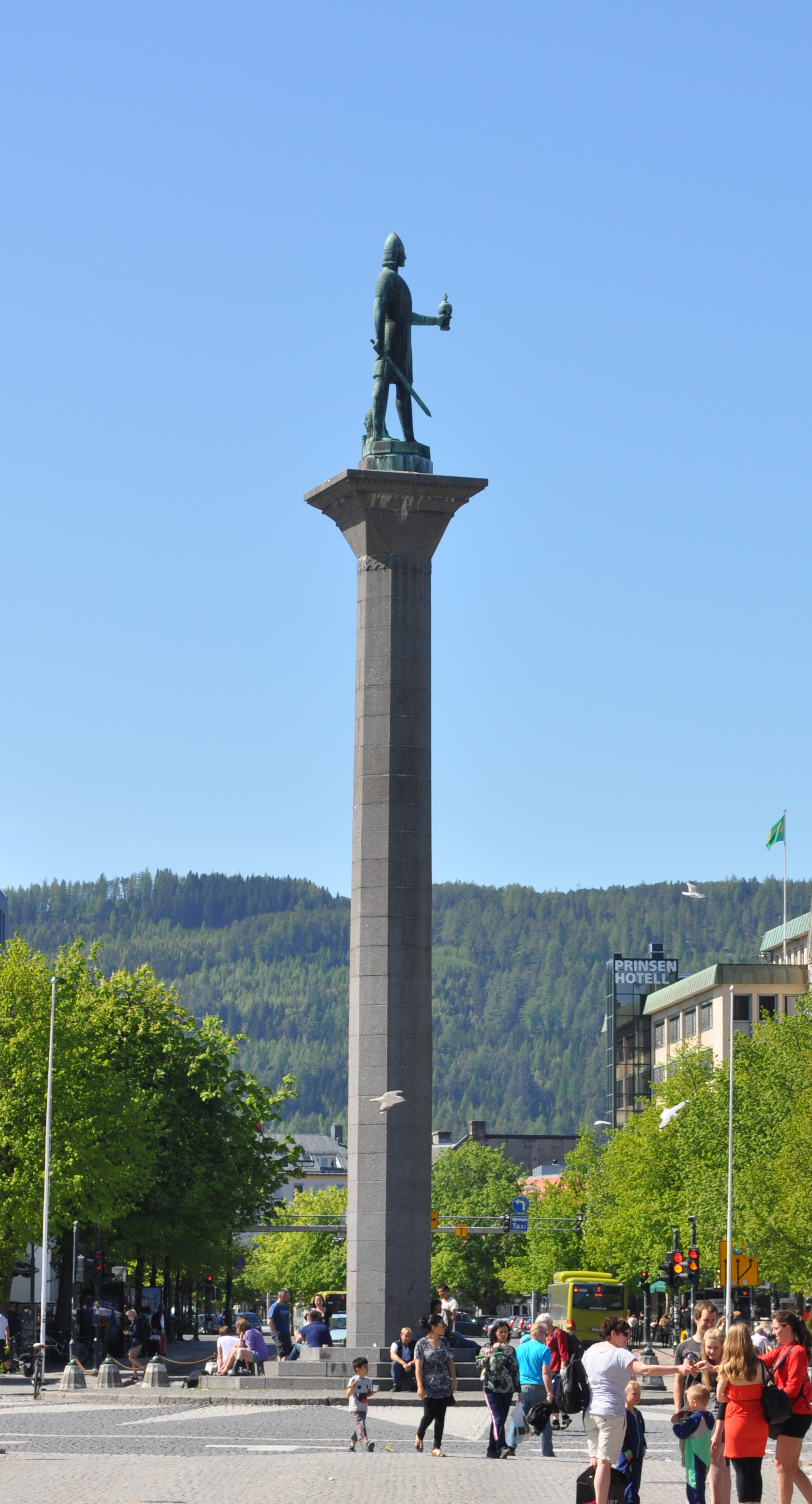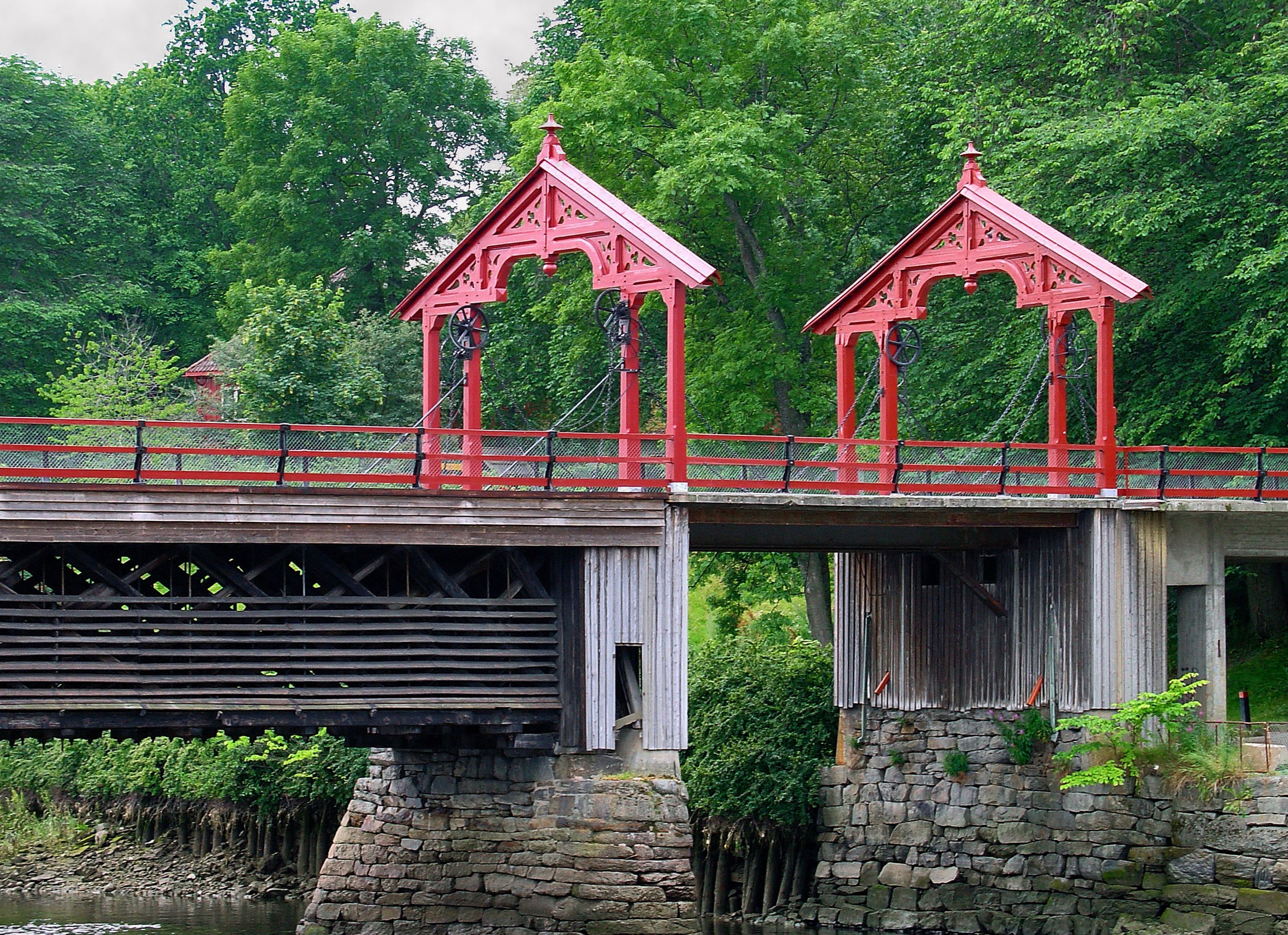|
Olav Tryggvason (statue)
A statue of Olav Tryggvason is located in Trondheim, Norway. Sculpted by sculptor Wilhelm Rasmussen, it honors King Olav Tryggvason who was the city's founder. The 18-metre (58-foot) high statue is mounted on top of an obelisk. It stands at the center of the city square (''Torvet i Trondheim'') at the intersection of the two main streets, Munkegata and Kongens gate. The statue was unveiled in 1921. Around the statue base is a cobblestone mosaic, dating from 1930, which forms a gigantic sun dial A sundial is a horological device that tells the time of day (referred to as civil time in modern usage) when direct sunlight shines by the apparent position of the Sun in the sky. In the narrowest sense of the word, it consists of a flat ... . The sun dial is calibrated to UTC+1, meaning that the reading is inaccurate by one hour in the summer. Gallery Olav Tryggvason (statue) (cropped).jpg, Closeup of the statue of Olav Tryggvason References External linksTorvet i ... [...More Info...] [...Related Items...] OR: [Wikipedia] [Google] [Baidu] |
Trondheim - Monument 01
Trondheim ( , , ; sma, Tråante), historically Kaupangen, Nidaros and Trondhjem (), is a city and municipality in Trøndelag county, Norway. As of 2020, it had a population of 205,332, was the third most populous municipality in Norway, and was the fourth largest urban area. Trondheim lies on the south shore of Trondheim Fjord at the mouth of the River Nidelva. Among the major technology-oriented institutions headquartered in Trondheim are the Norwegian University of Science and Technology (NTNU), the Foundation for Scientific and Industrial Research (SINTEF), and St. Olavs University Hospital. The settlement was founded in 997 as a trading post, and it served as the capital of Norway during the Viking Age until 1217. From 1152 to 1537, the city was the seat of the Catholic Archdiocese of Nidaros; it then became, and has remained, the seat of the Lutheran Diocese of Nidaros, and the site of the Nidaros Cathedral. It was incorporated in 1838. The current municipality was for ... [...More Info...] [...Related Items...] OR: [Wikipedia] [Google] [Baidu] |
Olav Tryggvason
Olaf Tryggvason (960s – 9 September 1000) was King of Norway from 995 to 1000. He was the son of Tryggvi Olafsson, king of Viken (Vingulmark, and Rånrike), and, according to later sagas, the great-grandson of Harald Fairhair, first King of Norway. He is numbered as Olaf I. Olaf is seen as an important factor in the conversion of the Norse to Christianity. He is said to have built the first Christian church in Norway, in 995, and to have founded the city of Trondheim in 997. A statue of Olaf Tryggvason is located in the city's central plaza. Historical information on Olaf is sparse. He is mentioned in some contemporary English sources, and some skaldic poems. The oldest narrative source mentioning him briefly is Adam of Bremen's ''Gesta Hammaburgensis ecclesiae pontificum'' of ''circa'' 1070. In the 1190s, two Latin versions of ''"Óláfs saga Tryggvasonar"'' were written in Iceland, by Oddr Snorrason and by Gunnlaugr Leifsson – these are now lost, but are thought to for ... [...More Info...] [...Related Items...] OR: [Wikipedia] [Google] [Baidu] |
Trondheim
Trondheim ( , , ; sma, Tråante), historically Kaupangen, Nidaros and Trondhjem (), is a city and municipality in Trøndelag county, Norway. As of 2020, it had a population of 205,332, was the third most populous municipality in Norway, and was the fourth largest urban area. Trondheim lies on the south shore of Trondheim Fjord at the mouth of the River Nidelva. Among the major technology-oriented institutions headquartered in Trondheim are the Norwegian University of Science and Technology (NTNU), the Foundation for Scientific and Industrial Research (SINTEF), and St. Olavs University Hospital. The settlement was founded in 997 as a trading post, and it served as the capital of Norway during the Viking Age until 1217. From 1152 to 1537, the city was the seat of the Catholic Archdiocese of Nidaros; it then became, and has remained, the seat of the Lutheran Diocese of Nidaros, and the site of the Nidaros Cathedral. It was incorporated in 1838. The current municipalit ... [...More Info...] [...Related Items...] OR: [Wikipedia] [Google] [Baidu] |
Wilhelm Rasmussen
Wilhelm Rasmussen (15 June 1879 – 6 December 1965) was a Norwegian sculptor. Wilhelm Robert Rasmussen was born in Skien in Telemark county, Norway. He studied under Norwegian sculptors Brynjulf Bergslien and Lars Utne (1862–1922), and later trained at the Drawing Academy in Oslo from 1895 to 1900, then a short time in Paris in 1902 and in Italy in 1906. From 1921 to 1945 he was professor of sculptor at the Norwegian National Academy of Craft and Art Industry and had among others, Ørnulf Bast as a student. His most extensive work was the 34-meter high column originally titled ''Eidsvollsøylen'', which in 1925 had won the competition sponsored by the Parliament of Norway for a monument on Eidsvolls plass in front of the Parliament building in memory of the Norwegian Constitution. Following a very controversial history, the 34-meter tall was re-titled Saga column (''Sagasøyla'') and was finally erected in the Bøverdalen valley in Lom municipality in the County of Oppland ... [...More Info...] [...Related Items...] OR: [Wikipedia] [Google] [Baidu] |
Sun Dial
A sundial is a horology, horological device that tells the time of day (referred to as civil time in modern usage) when direct sunlight shines by the position of the Sun, apparent position of the Sun in the sky. In the narrowest sense of the word, it consists of a flat plate (the ''dial'') and a gnomon, which casts a shadow onto the dial. As the Sun diurnal motion, appears to move through the sky, the shadow aligns with different hour-lines, which are marked on the dial to indicate the time of day. The ''style'' is the time-telling edge of the gnomon, though a single point or ''nodus'' may be used. The gnomon casts a broad shadow; the shadow of the style shows the time. The gnomon may be a rod, wire, or elaborately decorated metal casting. The style must be polar alignment, parallel to the axis of the Earth's rotation for the sundial to be accurate throughout the year. The style's angle from horizontal is equal to the sundial's geographical latitude. The term ''sundial'' can ... [...More Info...] [...Related Items...] OR: [Wikipedia] [Google] [Baidu] |

